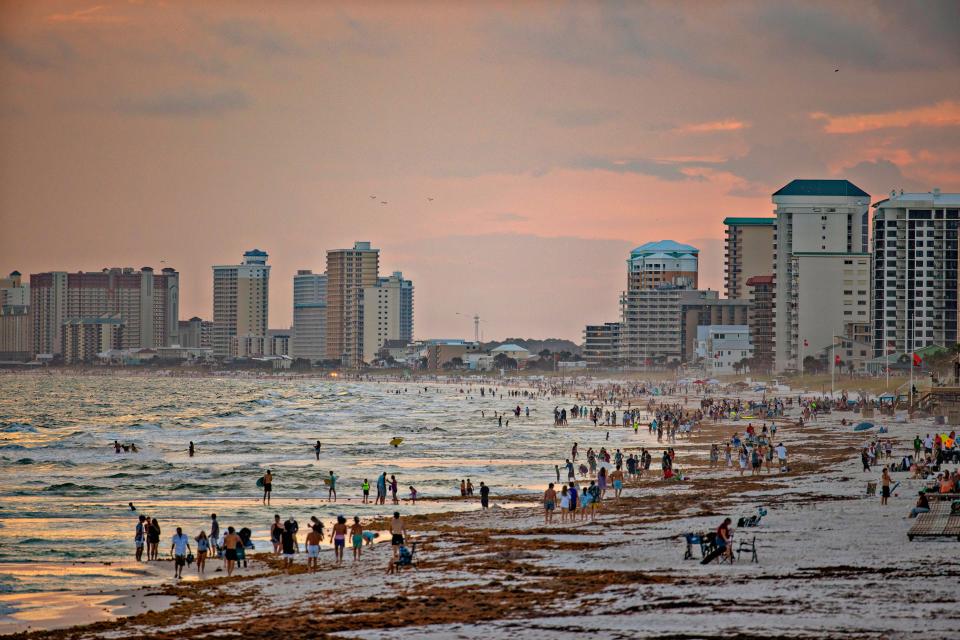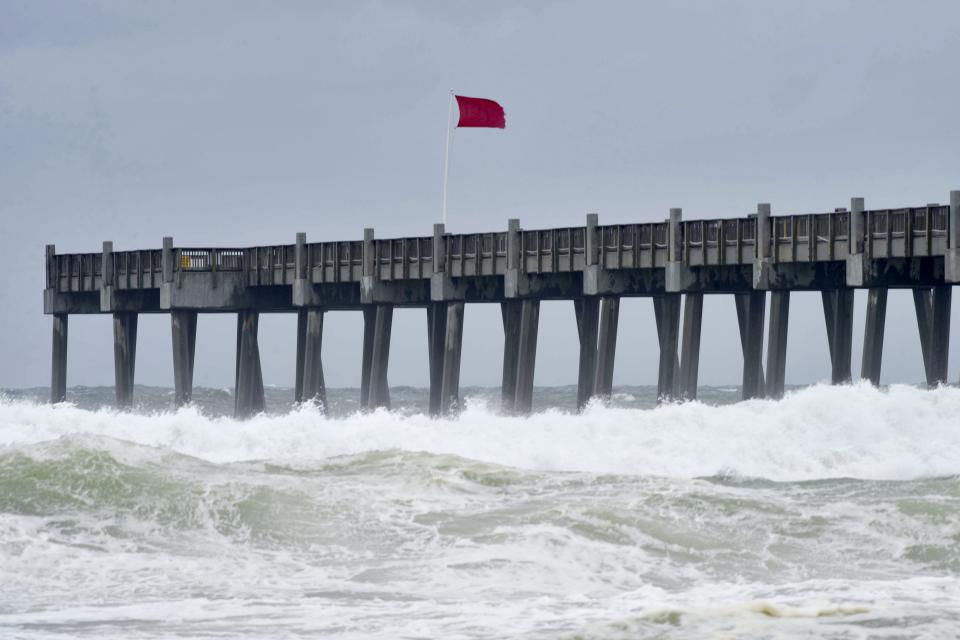Florida beaches use flag system for surf, tide conditions. Here's what each flag means:
If you have ever traveled to a beach in Florida, you have probably seen or heard about beach flags, a flag system used by Florida beaches to communicate tide and surf conditions to beachgoers in a simple but effective manner.
Like traffic lights, green means go and red means stop. Simple enough, right? Maybe not.
On Friday, a 13-year-old Kentucky teen drowned in Destin, Florida, just one day after Escambia Fire Rescue saved eight people in Perdido Key, Florida.
Destin drowning: 13-year-old Kentucky teen drowns in Destin, Florida
The National Weather Service in Mobile issued a high-risk warning about deadly rip currents stretching along the Alabama and Florida Gulf coasts, from Dauphin Island to Destin, on April 6. While it’s still unclear if rip currents played a role in either event, both underline the importance of staying aware and alert about tide and surf conditions.
Here’s what you need to know about Florida’s warning flag system, how to spot rip tides and how you can keep track of tide and surf conditions beyond flags.

What do Florida’s beach flags mean?
Florida’s Beach Warning Flag Program uses four colors to indicate current tide and surf conditions: Red, yellow, green and purple.
Green flag: Low hazard — conditions are calm but beachgoers should still exercise caution.
Yellow flag: Medium hazard — conditions present a moderate hazard. Swimmers should exercise extra caution.
Red flag: High hazard — indicates high surf and/or strong currents. Some beach communities will prohibit swimming and wading, so be sure to check local guidelines.
Double red flag: Water is closed to the public — typically used during hurricanes or other natural disasters.
Purple flag: Dangerous marine life — man o’ war, jellyfish, stingrays, etc. pose a potential hazard to swimmers.
8 rescued: Escambia Fire Rescue saves 8 people in 2 Perdido Key locations within hours of each other
What if there are no flags?
Beachgoers shouldn’t assume an absence of flags indicates safe conditions. Most local municipalities update flag conditions on their website daily.
Are all Florida beach flags the same?
Kind of. In 2005, the Florida Legislature adopted a uniform flag system and amended section 380.276, F.S. to require all public beaches to display warning flags using only the flags developed for the state’s warning program.
Specific rules regarding each color may change from community to community. For instance, swimming and wading are prohibited during red flag conditions on Pensacola Beach. However, all Florida beaches use the same flag colors indicating the same conditions.

What beach flag color is used for rip currents?
Florida does not use beach flags to specifically warn of the presence of rip currents. Florida Coastal Management Program works with local government and public parks to provide educational signs if funds are available.
The National Weather Service has also created an experimental beach forecast page that provides a color-coded map indicating the forecast rip current risk level that is available to the public.
To use the map, head over to https://www.weather.gov/beach/. Users can click on beach umbrellas to check the current beach forecast. Greyed-out umbrellas do not have a current forecast.
What is a rip current?
The National Weather Service defines rip currents as “channelized currents of water flowing away from the shore at surf beaches.” They are often found forming at breaks in sandbars or near structures like jetties and piers.
How to spot a rip current?
Spotting a rip current may not always be an easy task for everyone, but the National Weather Service provides four clues that a rip current may be present:
A narrow gap of darker, seemingly calm water between areas of breaking waves and white water.
A channel of churning, choppy water.
A difference in water color.
A line of foam, seaweed or debris moving seaward.
What to do if you’re caught in a rip current
The National Weather Service provides five tips on what you should do if you are caught in a rip current:
Relax. Rip currents won’t pull you under the water.
Don’t exhaust yourself swimming against the current.
You may be able to escape by swimming out of the current in a direction following the shoreline or toward breaking waves. Swim to shore once you’re clear.
If you can’t escape the current, float or tread water.
If you feel like you can’t reach the shore, draw attention to yourself by waving and yelling for help.
This article originally appeared on Pensacola News Journal: Florida beach flag meanings: What do all the colors mean?